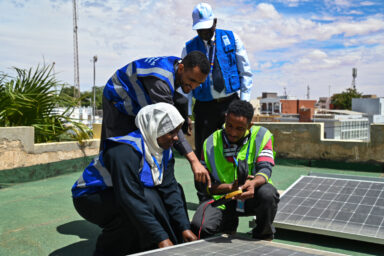Census Data Delay Scrambles Plans for Redistricting ; In the Sonoran Desert, GIS Helps Map Migrant Deaths ; and More Picks 4/7
Census Data Delay Scrambles Plans for State Redistricting (DonkeyHotey)
The author writes, “Stymied by delayed census data needed for redistricting, some states are considering postponing their 2022 primaries or turning to other population estimates to start the once-a-decade task of redrawing voting districts used for U.S. House and state legislative elections. The U.S. Census Bureau was supposed to provide redistricting data to the states by March 31, but after setbacks from the pandemic, it won’t be ready until mid- to late August and might not be available in an easy-to-use format until Sept. 30. That’s later than the legal deadlines to complete redistricting in some states and could mean less time for court challenges, candidate filing and ballot creation.”
In the Sonoran Desert, GIS Helps to Map Migrant Deaths (Doug)
From Undark: “Last year geographer Sam Chambers published an unusual map of the Sonoran Desert. He wasn’t interested in marking roads, mountains, and cities. Instead, the University of Arizona researcher wanted to show the distance a young male can walk in various regions of the desert before the high temperature and physical exertion put him at risk of dying from heat exposure or hyperthermia. On the resulting map, red and purple correspond with cooler, mountainous terrain. Yellow and white, which dominate the image, indicate a remote, hot valley. It’s here where migrants seeking to cross between Mexico and the United States are at greatest risk of dying from the desert’s relentless sun.”
She got $662/Month to Run a Tiny Washington Town Post Office. When Asked for More, USPS Shut It Down (Reader Steve)
The author writes, “Just like that, with a one-page notice stuffed into the 95 mailboxes, it was over for the little post office here on the Long Beach Peninsula. There was no mincing words. ‘…this office has been terminated…’ For nearly 132 years, until Feb. 27, it had been the meeting place for locals, and the heart of this unincorporated community of maybe 200 named after the Chinook chief Nahcati. Without that post office sign on the window, there really isn’t anything else that said you had arrived in town. What caused the shutdown was about $600 to $900 a month in added costs, and even that was negotiable.”
Reading Minds With Ultrasound: A Less Invasive Technique to Decode the Brain’s Intentions (Mili)
The author writes, “What is happening in your brain as you are scrolling through this page? In other words, which areas of your brain are active, which neurons are talking to which others, and what signals are they sending to your muscles? Mapping neural activity to corresponding behaviors is a major goal for neuroscientists developing brain-machine interfaces (BMIs): devices that read and interpret brain activity and transmit instructions to a computer or machine. Though this may seem like science fiction, existing BMIs can, for example, connect a paralyzed person with a robotic arm; the device interprets the person’s neural activity and intentions and moves the robotic arm correspondingly.”
Deepest-Ever Shipwreck Dive Locates Navy Destroyer That Sank During Epic WWII Battle (Dana)
From Military: “Two former Navy officers have located wreckage of a U.S. ship that sank in the Philippine Sea 76 years ago in what’s being hailed the deepest shipwreck dive in history. A large section of the USS Johnston, a Fletcher-class destroyer, was found 21,180 feet beneath the surface, Caladan Oceanic and the Naval History and Heritage Command announced Thursday. The ship sank off the coast of Samar Island on Oct. 25, 1944, during World War II’s Battle of Leyte Gulf, an intense struggle with Japanese forces that heavily outmatched the Johnston’s crew.”



